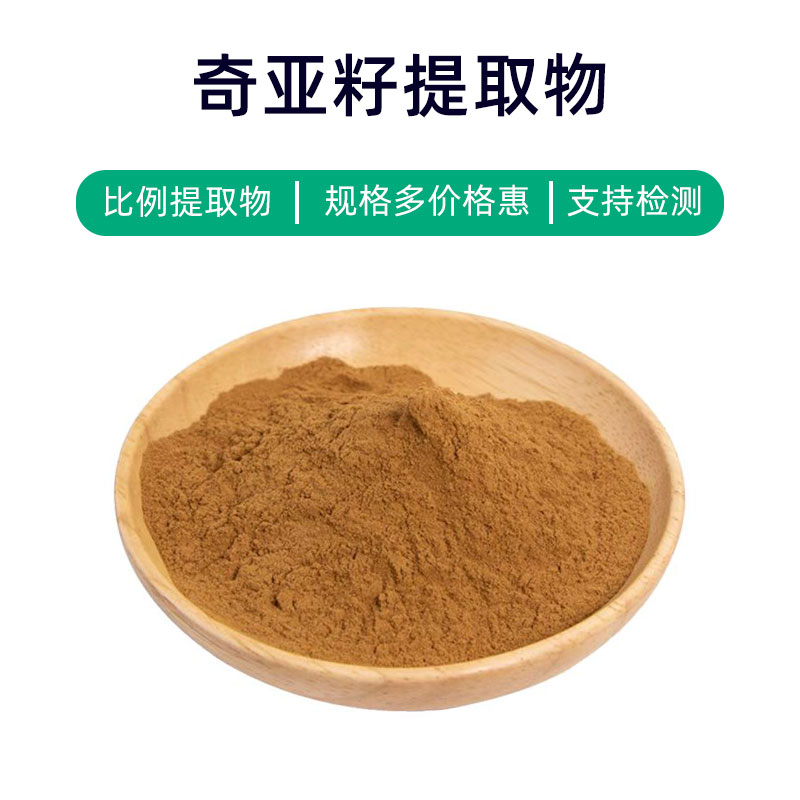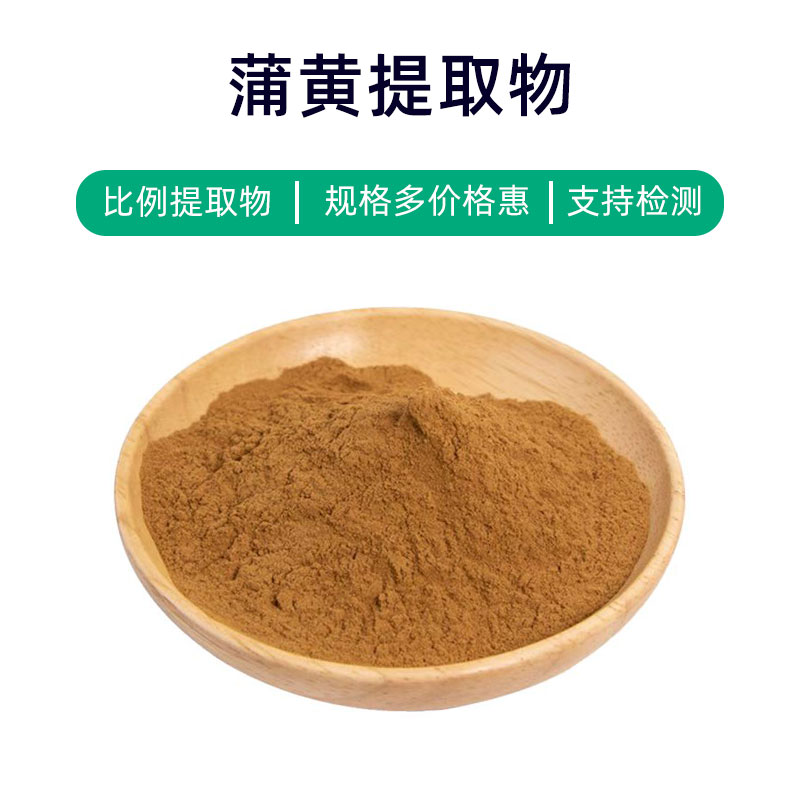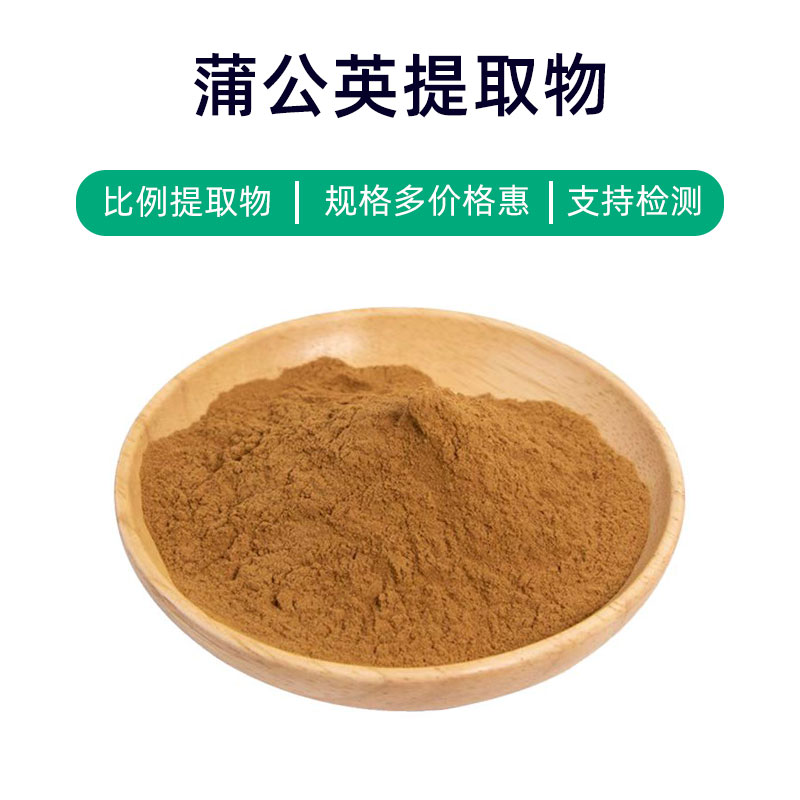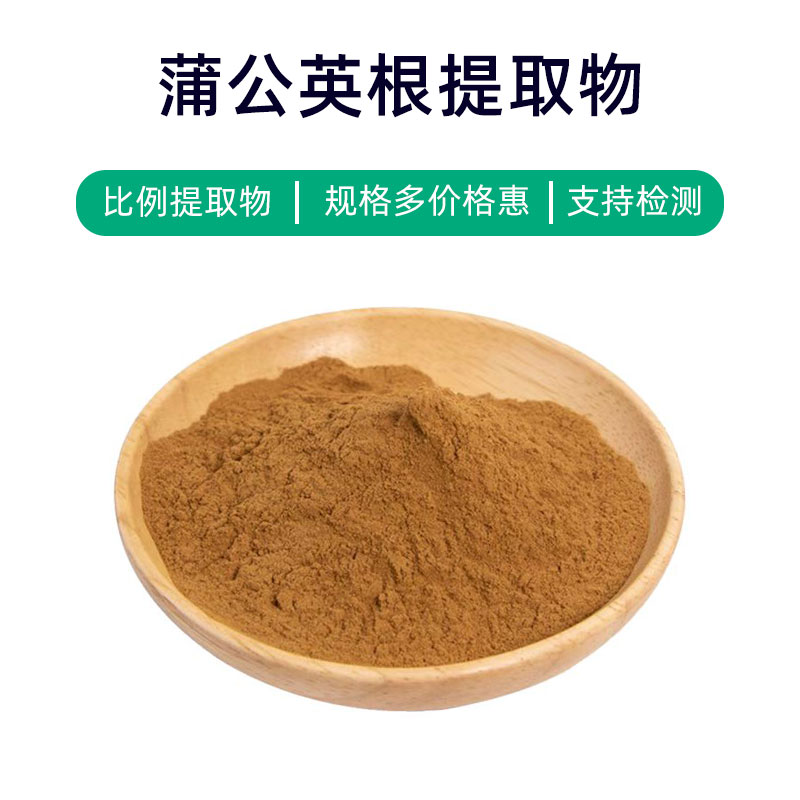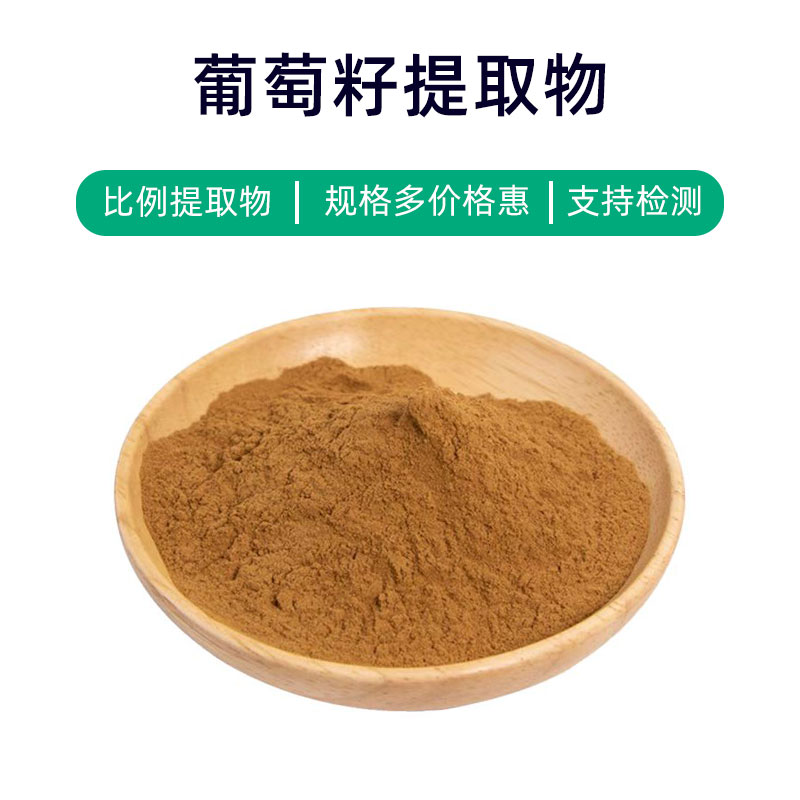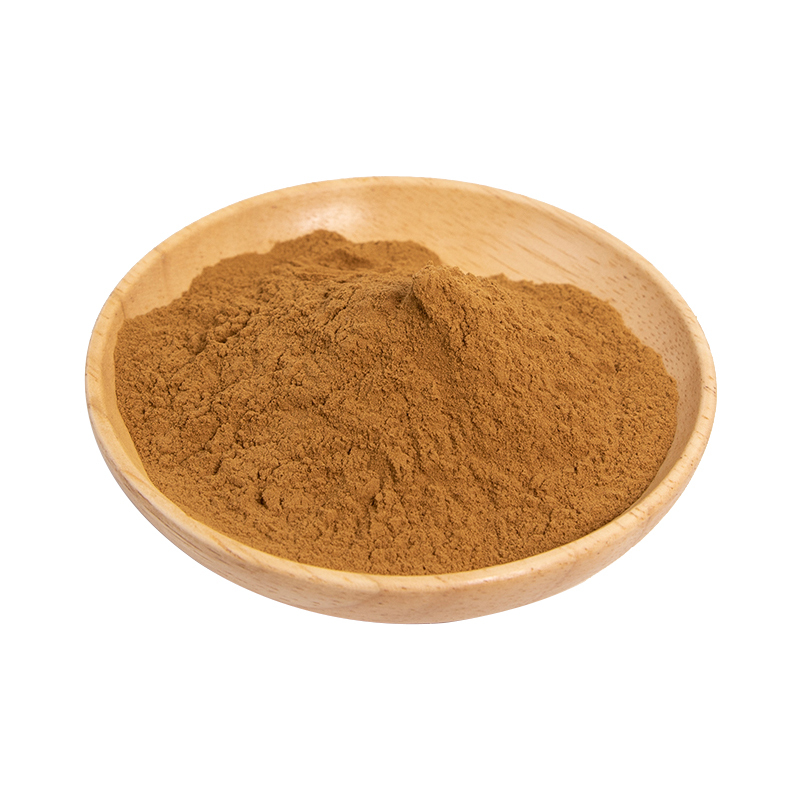Introduction to Cinnamon Bark Extract
Cinnamon bark extract is a natural plant extract obtained from the bark of the cinnamon tree, with active components such as cinnamaldehyde, cinnamic acid, and cinnamic acid esters. These components give cinnamon bark extract its various benefits and applications.
Firstly, cinnamon bark extract possesses powerful antioxidant properties that help neutralize free radicals, slow down cellular oxidation processes, and delay aging. Secondly, it exhibits anti-inflammatory and antibacterial effects, effectively alleviating inflammatory responses and inhibiting the growth of bacteria and fungi, aiding in the treatment of skin inflammation and infections.
In the medical field, cinnamon bark extract is often used in traditional Chinese medicine formulas for improving digestive function, promoting blood circulation, and alleviating menstrual pain, among other symptoms. In the food industry, it is widely used in seasonings, pastries, and beverages, adding a unique flavor and taste to products. Additionally, it is frequently utilized in cosmetics as an antioxidant and anti-inflammatory ingredient in skincare and oral care products, helping to protect the skin from free radical damage and reduce discomfort.
Overall, cinnamon bark extract is a natural plant extract with a wide range of applications and benefits, playing an important role in medicine, food, and cosmetics.
Production Process for Cinnamon Bark Extract
The production process for cinnamon bark extract generally involves several key steps:
- Raw Material Preparation: Select fresh cinnamon bark as raw material, thoroughly wash it, and remove impurities. Then chop or grind the cinnamon bark into appropriately sized particles for further processing.
- Extraction Process: Place the processed cinnamon particles in an extractor and use an appropriate solvent (such as ethanol or water) for extraction. The extraction time and temperature will affect the quality and yield of the extract. A multiple extraction method is usually employed to fully extract the active components from the cinnamon.
- Concentration of Extract: After filtering the extracted liquid to remove impurities, use evaporation or vacuum concentration to evaporate the solvent, resulting in a concentrated extract.
- Precipitation and Separation: By controlling the temperature or adding suitable precipitants, the cinnamon extract is precipitated from the liquid. The precipitated material is then separated by centrifugation or filtration to obtain the crude extract.
- Refinement Process: Further refinement of the crude extract, such as freeze-crystallization, column chromatography, or vacuum distillation, is conducted to enhance product purity and quality.
- Drying: The refined cinnamon extract undergoes appropriate drying processes to achieve the desired moisture content and yield the final product.
- Packaging and Storage: The dried cinnamon extract is packaged, and storage conditions are strictly controlled to avoid direct sunlight and high temperatures, ensuring product stability and quality.
The above outlines a general production process for cinnamon bark extract, which may vary based on different manufacturers and product requirements.
Effects and Side Effects of Cinnamon Bark Extract
Cinnamon bark extract is a commonly used herbal extract with multiple benefits, primarily including the following aspects:
- Antibacterial and Anti-inflammatory: Cinnamon bark extract contains abundant volatile oils and flavonoids, exhibiting strong antibacterial and anti-inflammatory effects, and can be used to treat various infectious diseases, such as respiratory and intestinal infections.
- Antioxidant: The flavonoids and polyphenols in cinnamon bark extract have significant antioxidant properties, capable of scavenging free radicals in the body, delaying cellular aging, and offering health benefits in preventing aging-related diseases.
- Blood Sugar Regulation: Studies have shown that some active components in cinnamon bark extract can stimulate insulin release and enhance cellular glucose uptake, thereby lowering blood sugar levels, serving as an adjunct treatment for diabetes.
- Lipid Regulation: Some components of cinnamon bark extract have lipid-regulating effects, helping to lower serum cholesterol and triglyceride levels, reducing the risk of atherosclerosis and related cardiovascular diseases.
- Anti-inflammatory Pain Relief: Cinnamon bark extract has certain analgesic and anti-inflammatory properties, which can alleviate pain and discomfort caused by conditions like arthritis and muscle pain.
- Digestive Aid: Cinnamon bark extract can stimulate gastrointestinal motility and increase gastric secretions, aiding in digestion and alleviating symptoms of indigestion and stomach pain.
- Antimicrobial: Cinnamon bark extract exhibits inhibitory effects against various bacteria and fungi, useful in preventing and treating oral diseases and skin infections.
- Circulation Improvement: Cinnamon bark extract has a vasodilatory effect, improving microcirculation and promoting blood flow, helping to maintain overall body health.
As a natural herbal extract, cinnamon bark extract is generally considered safe; however, individual variations and allergic reactions should still be taken into account. Prolonged or excessive use may lead to digestive discomfort or allergies. It is advisable to consult a physician or pharmacist before use and to adhere strictly to recommended dosage guidelines.
Applications and Dosage of Cinnamon Bark Extract
Cinnamon bark extract has a wide range of applications in medicine, food, and cosmetics, with the following application scenarios and dosage recommendations:
- Applications in Medicine:
- Uses: Often employed in treating diabetes, infectious diseases, indigestion, and cardiovascular issues.
- Dosage: Can be used as an oral or topical medication. The typical oral dosage ranges from 0.5 to 2 grams, taken 2-3 times a day; for topical use, it can be added to topical formulations according to a physician's recommendations.
- Applications in Food:
- Uses: Commonly used as a food additive to enhance flavor, improve taste, and provide health benefits.
- Dosage: Generally added according to food processing requirements, with typical usage ranging from 0.01% to 0.5%, depending on the type of product.
- Applications in Cosmetics:
- Uses: Typically found in skincare products and lipsticks, known for its antioxidant, antibacterial, and anti-inflammatory properties.
- Dosage: The amount added to cosmetics is generally low, usually within 1% of the overall formulation, adjusted as needed based on specific product requirements.
- Other Applications:
- Aromatherapy: With its rich aroma, cinnamon bark extract can be used in aromatherapy for refreshing and stress-relieving purposes.
- Food Preservation: It has inhibitory effects on bacteria, making it suitable for food preservation, such as being added to packaging or used as a natural preservative.
Overall, as a natural plant extract, cinnamon bark extract holds significant application value in medicine, food, and cosmetics. When using it, one should select the appropriate application and dosage based on specific circumstances, adhering to relevant regulations to ensure the safety and efficacy of the product.
Introduction to the Source Plant of Cinnamon Bark Extract, Its Distribution, and Growing Environment
Cinnamon bark extract comes from the cinnamon tree, a common plant with rich medicinal and flavoring value. Below is detailed information about the cinnamon tree, including its introduction, distribution, and growing environment:
- Cinnamon Tree Introduction:
- Latin Name: Cinnamomum cassia (cinnamon tree).
- Plant Source: The cinnamon tree is an evergreen tree belonging to the laurel family and is one of the main sources of cinnamon bark extract.
- Main Components: The bark of the cinnamon tree is rich in volatile oils, with cinnamaldehyde being the most representative component.
- Distribution:
- The cinnamon tree is native to southern China and Southeast Asia, primarily distributed in locations such as China, Vietnam, and Indonesia.
- In China, it is commonly found in provinces south of the Yangtze River, such as Guangdong, Guangxi, Fujian, and Yunnan.
- Growing Environment:
- Climate Conditions: The cinnamon tree thrives in a warm, humid climate, is highly adaptable, and has no strict temperature requirements, but it does require high levels of light and humidity.
- Soil Requirements: It can adapt to various soil types but is best suited for fertile, well-draining sandy loam.
- Growing Altitude: Generally grows at elevations between 200 to 1000 meters, although cinnamon trees can also be found at higher altitudes.
- Growth Characteristics:
- The cinnamon tree is a tall evergreen, with an upright trunk and a full canopy, and its branches spread out.
- The bark is rough, gray-brown in color, and the leaves are oval or elongated, leathery, and evergreen.
- Utilization Value:
- Medicinal Value: Cinnamon is an important traditional Chinese medicine ingredient, known for warming properties, dispelling cold, promoting blood circulation, and alleviating pain and spasms, commonly used to treat abdominal pain, lower back pain, and arthritis.
- Flavoring Value: With its unique aroma and spicy flavor, cinnamon is commonly used in food seasoning, such as baked goods, desserts, and meats.
The cinnamon tree is an economically significant plant, valued not only in medicine but also widely used in food production, cosmetics, and other fields. Its favorable growing conditions and rich medicinal properties make it an important resource for utilization and research.
Processing and Storage of Cinnamon Bark Extract
The processing of cinnamon bark extract primarily involves the following steps: First, the harvesting of cinnamon, usually done when the bark is mature; next, washing and removing impurities to ensure the purity and quality of the extract; then grinding and crushing the cinnamon into a powder to facilitate extraction; thereafter, the extraction itself, using common methods like steam distillation or solvent extraction; finally, filtering, concentrating, and drying the extract to remove impurities and concentrate it into liquid or powdered form, resulting in the final product.
For storing cinnamon bark extract, attention should be paid to the following points: First, choose a dry and well-ventilated environment, avoiding direct sunlight and damp conditions to prevent mold growth and moisture absorption; second, use suitable packaging to seal the extract in moisture-proof, light-proof, and oxygen-proof containers, such as aluminum foil bags or sealed glass bottles; finally, avoid high temperatures and humidity, storing it at room temperature, and regularly check and clean the storage containers to ensure the quality and stability of the extract.
Monica Sun is a seasoned expert in the plant extraction industry with over a decade of experience in research and production. She specializes in the extraction and purification of plant active ingredients, focusing on driving innovation in natural product applications. Monica has participated in the development of multiple functional plant extracts, delivering high-value natural raw material solutions for the health food, pharmaceutical, and dietary supplement sectors.









